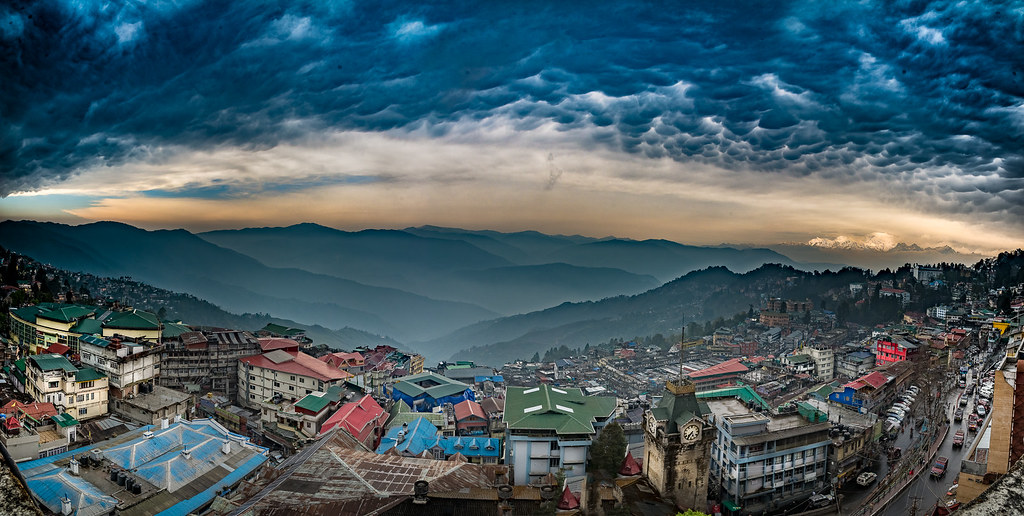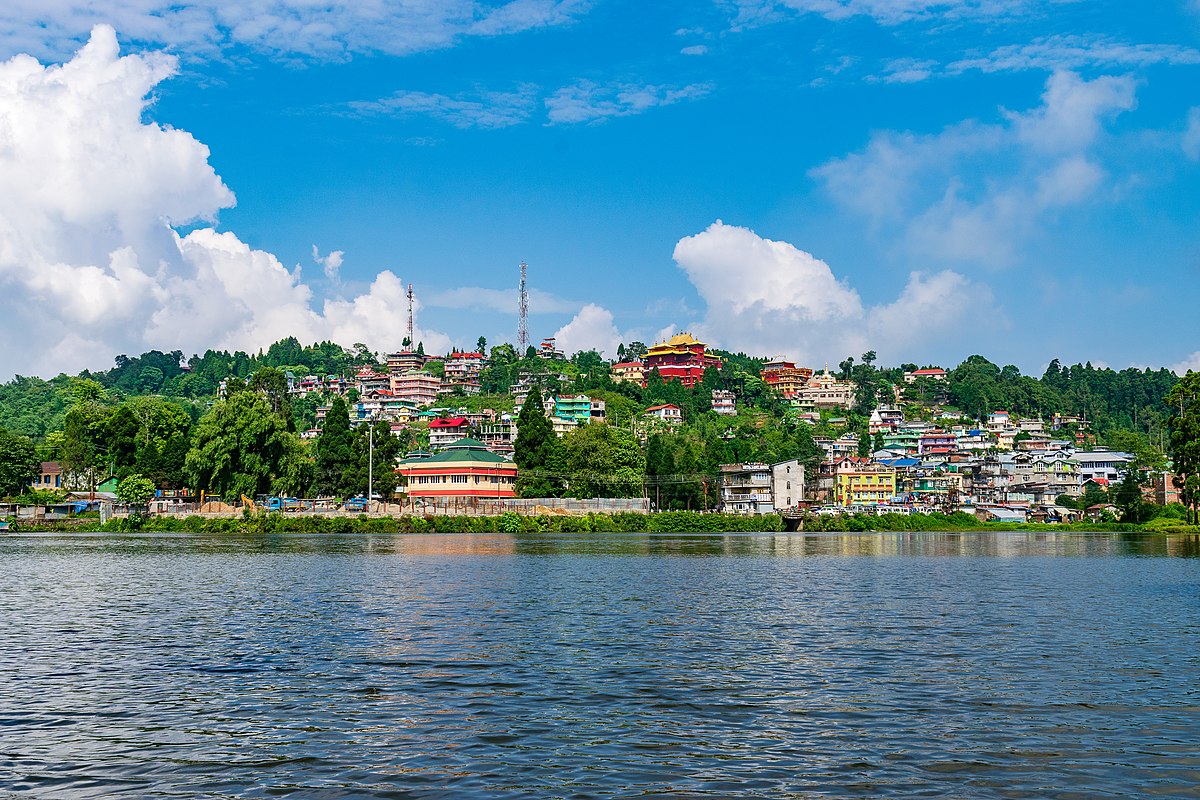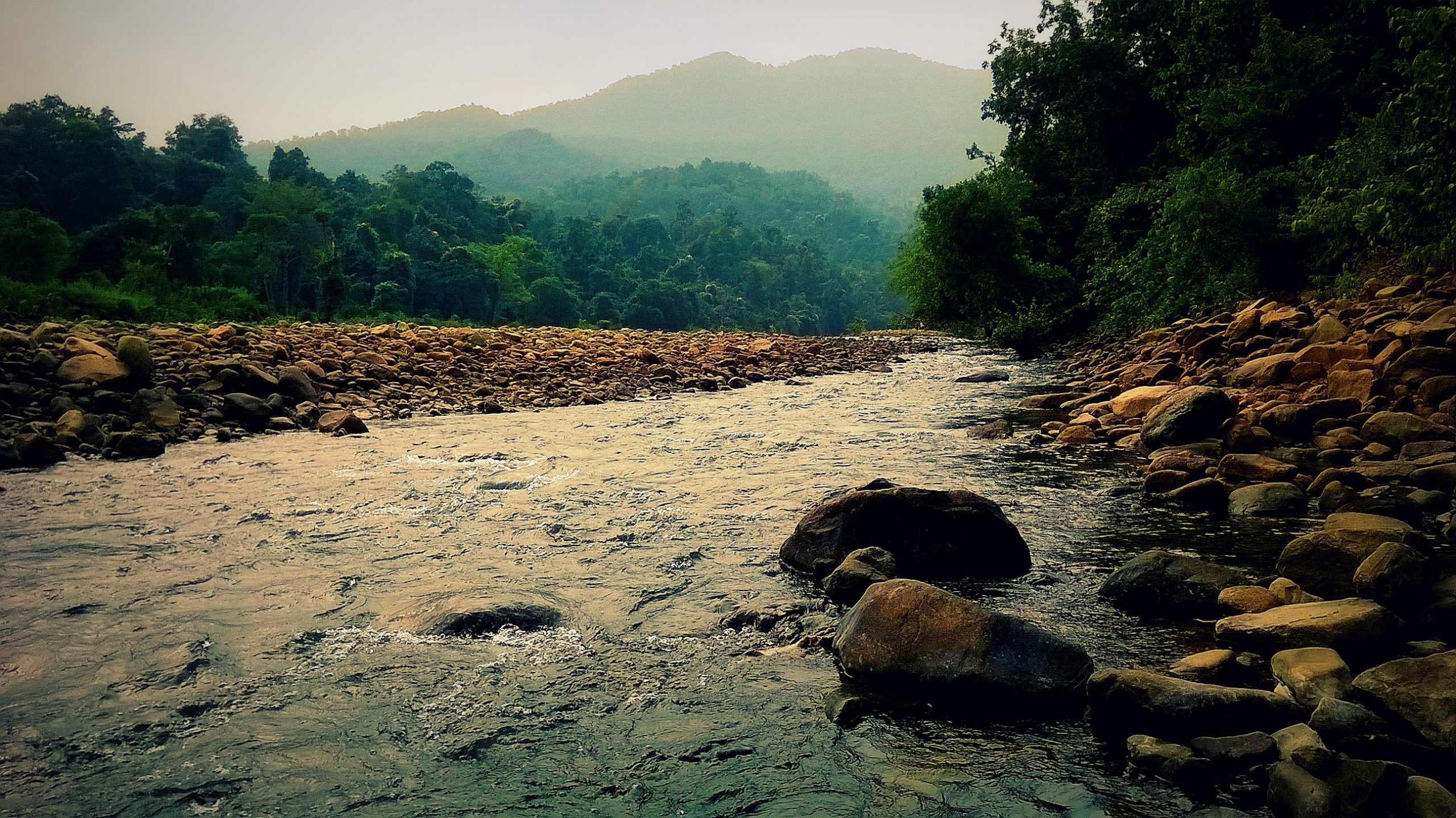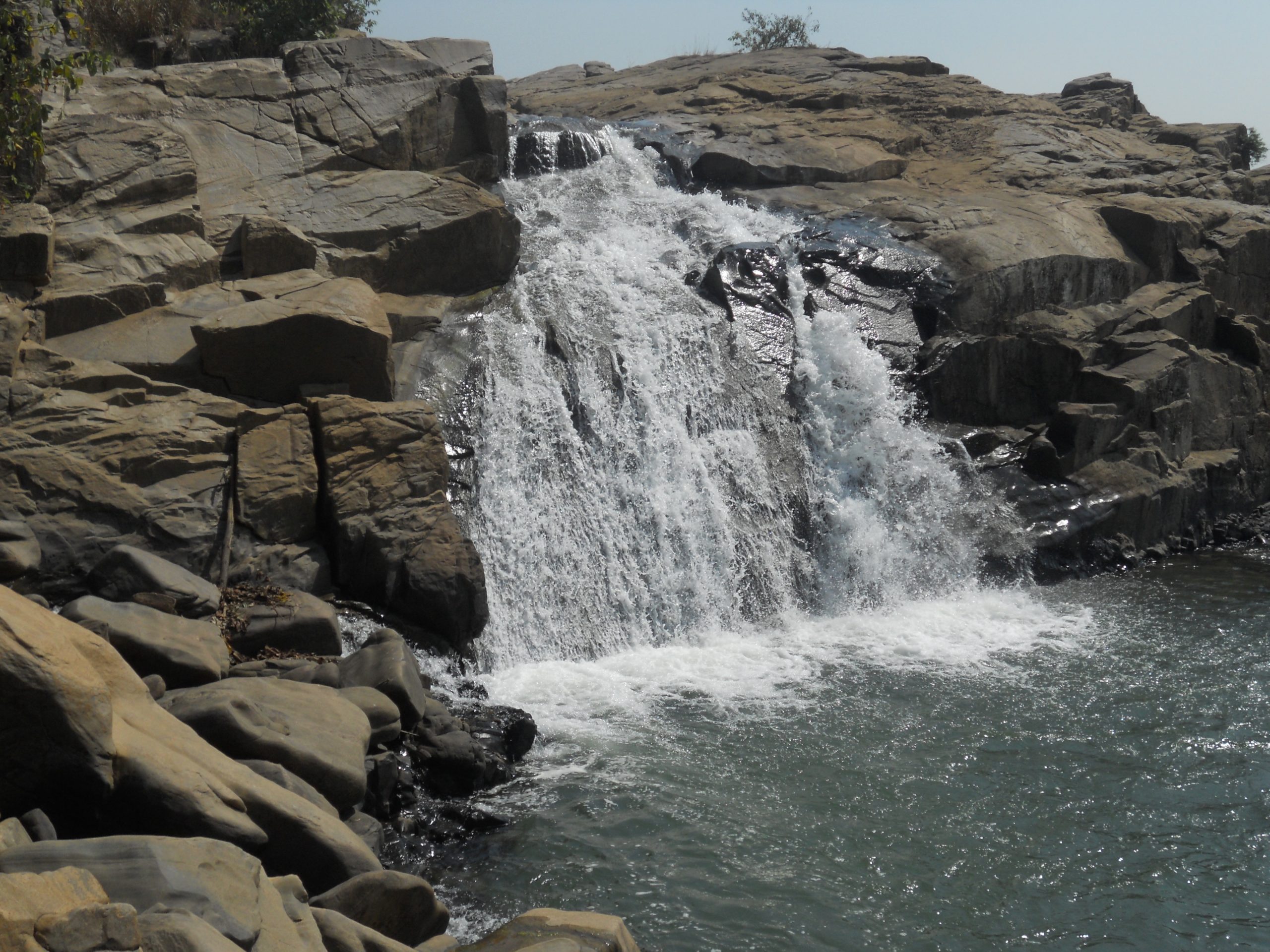18 Places to Visit in East India
India’s Eastern Zone is rich in cultural heritage. Beaches, temples, monasteries, and a Buddhist circuit with a rural flavour are all available. Calcutta, India’s former capital, Puri & Bhubaneshwar, Buddhist Circuit in Bihar, Monasteries in Sikkim, and the Kanchenjunga Range of Mountains in Darjeeling are among the most popular tourist destinations in this region. Let us take a look at the list of 20 places to visit in East India in major detail.
1. Darjeeling, West Bengal
Image Source: Saurabh Chatterjee (Flickr)
Darjeeling is one of the most beautiful hill station places to visit in East India, with jaw-dropping scenery, mesmerising sunrises, the untouched beauty of the hills, the old-world charm of the past, and the welcoming smiles of the locals. Darjeeling, nestled amidst acres of lush green tea plantations on a steep mountain ridge, stands at a height of 2,050 metres above sea level, boasting cool climes all year. This picturesque hill station, located about 700 kilometres from Kolkata, is ideal for a romantic honeymoon.
2. Kolkata, West Bengal
 Source: Pixahive
Source: Pixahive
Kolkata, India’s second-largest city, is a never-ending celebration of human existence, simultaneously luxurious and squalid, refined and frantic, pointedly futuristic while beautifully decaying. The capital of West Bengal, a vibrant 350-year-old metropolis on India’s Eastern Coast, thrives on contradictions and imposing spectacles; nothing is ordinary in this city. Kolkata, also known as the City of Joy, is the country’s artistic, cultural, and intellectual capital in every sense.
Kolkata’s streets are vibrant, busy, and chaotic, but they are also alive with life and creativity. The city has created a beautiful juxtaposition of old colonial-era charm with the nascent upcoming hipster culture that thrives among the city’s millennial residents, driven by the indomitable spirit of the self-made middle class.
3. Dooars, West Bengal
Source: Wikimedia Commons
Dooars is a local name for the floodplains of North-East India around Bhutan, which stretch from the Teesta in the east to the Sankoshi in the west. Because the Dooars are the gateway to Bhutan, the name ‘Dooars’ was derived from the word ‘door.’ Jalpaiguri, Darjeeling, Siliguri, and other towns and districts in this region make up the Dooars. Imagine the mighty range of Eastern Himalayan mountains in the background, a band of thick forests, rich in species of Flora and Fauna, continued with tea gardens and cut here and there by water bodies. Dooars is smack dab in the middle of it all. This is the gate you don’t want to rush through.
4. Gopalpur, Odisha
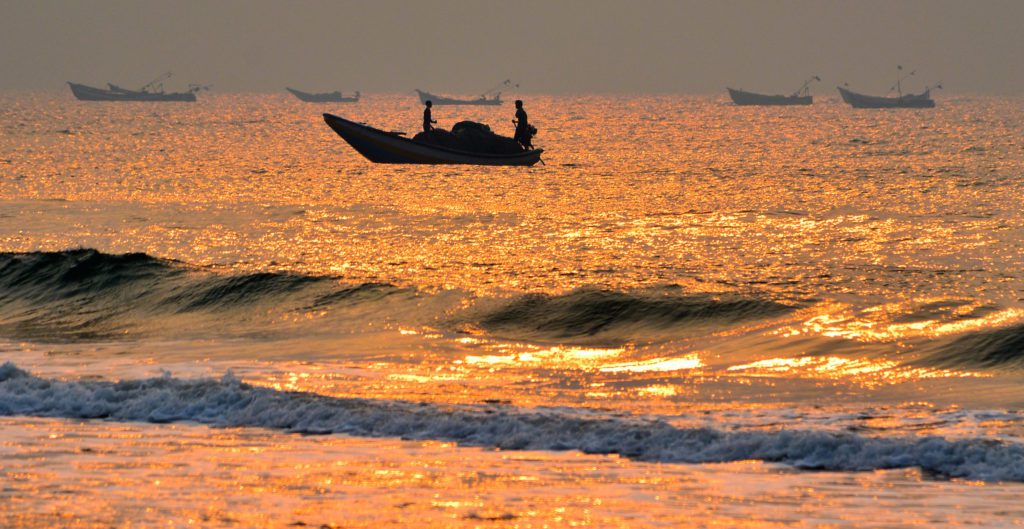
Image Source: Satyajit Das (Flickr)
The quaint, tiny town of Gopalpur is located on the southern coast of Odisha, just 15 kilometres from the city of Behrampur. It was a seaport bustling with trade and commerce during the Colonial Era. Because of its remoteness, peace, and offbeat crowd, Gopalpur-on-Sea is considered one of India’s most beautiful beaches. The beaches are gleaming gold, and the azure waters of the Bay of Bengal provide the ideal setting for relaxation and immersion in nature. With more people becoming aware of its beauty, Gopalpur is quickly becoming one of the most sought-after beaches in the country.
5. Konark, Odisha

Image Source: Laksman Rawat (Flickr)
Konark, in the Indian state of Orissa, is famous for the Sun Temple, which is a UNESCO World Heritage Site, as well as the annual dance festival and its beautiful sandy beaches. The Annual Dance Festival is a five-day cultural extravaganza that brings together exceptional dance talent from across the country. The celebrations take place against the backdrop of the Sun Temple, which adds to the overall grandeur and magnificence of the event. Aside from that, Konark hosts the Sun Festival, during which devotees bathe in the sea to offer prayers to the Sun God. The Dance Festival also features a Handicrafts Mela, where visitors can purchase one-of-a-kind and exquisitely handcrafted items that beautifully reflect Oriya art.
6. Mirik, West Bengal
Source: Wikimedia Commons
Mirik, a hill town on the banks of a large lake, adds to North Bengal’s bounty. Mirik, nestled in the Himalayan Valley, offers more than just beautiful mountains and lakes. West Bengal tourism is incomplete without Mirik, which offers everything from romantic boating experiences to temples for the faithful and orchids and gardens for nature’s children. The densely populated, but not overcrowded town also has viewpoints for quiet contemplation and traditional Indian Bazaars where you can splurge. Going to Mirik for the ideal hill station getaway is an idea that will never fail you.
7. Kurseong, West Bengal
Source: Pixahive
Kurseong, also known as the ‘Land of White Orchids,’ is a hill station near Darjeeling known for its waterfalls, temples, and Buddhist gompas, as well as the spectacular views it offers. Kurseong is a peaceful hill station located on the Siliguri-Darjeeling highway. Most of the year, the weather in Kurseong is milder and pleasant. The ‘Land of White Orchids,’ as Kurseong is known, is named after the flowers that abound on its hilly slopes. It’s difficult not to be enchanted by the sight of tea plantations and lush green forests set against a backdrop of snow-capped mountains. At sunset, the sky becomes a kaleidoscope of the most beautiful colours.
8. Gaya, Bihar
Source: Wikimedia Commons
Gaya, Bihar’s second-largest city and a city of ancient historical and mythological significance, is one of the most popular places to visit in East India. It is 100 kilometres from Patna, Bihar’s capital and one of the most important Hindu and Buddhist pilgrimage sites. It is unique because of its natural surroundings, narrow byways, and historic structures. Gaya is a sacred site for Jains because it contains numerous Jain temples. For Buddhists, Gaya is significant because it is where Buddha preached the Fire Sermon at Brahmayoni Hill, which was previously known as Gayasisa.
9. Bhubaneswar, Odisha

Image Source: Manfred Sommer (Flickr)
If you want to experience Eastern India like a local, Bhubaneswar, the state capital of Odisha, is one of your best bets. This region, which fuses the rich history of the empire with the bustling metropolis, offers the best of both worlds. The Bindu Sarovara Lake, the Udayagiri and Khandagiri Caves, and the Odisha State Museum are all popular tourist attractions, but apart from that, take a stroll down the hawker streets and immerse yourself in the simple local culture.
10. Jalpaiguri, West Bengal
Source: Wikimedia Commons
Rarely does one come across a destination as tourist-friendly as Jalpaiguri. However, a significant portion of it remains untapped. Turbulent rivers battling their way out of steep gorges, vast stretches of forest cover, undulating Tea Estates, and the panoramic grandeur of the Himalayas are just a few of the jewels that drew the British deep into the heart of this land.
Simply driving around or going for a hike will never allow your eyes to rest. There is no better place for a tourist who is a nature lover or a fan of wildlife than this. In the various Sanctuaries, National Parks, and Tiger Reserves available, one can let their imagination run wild.
11. Chilika Lake, Odisha
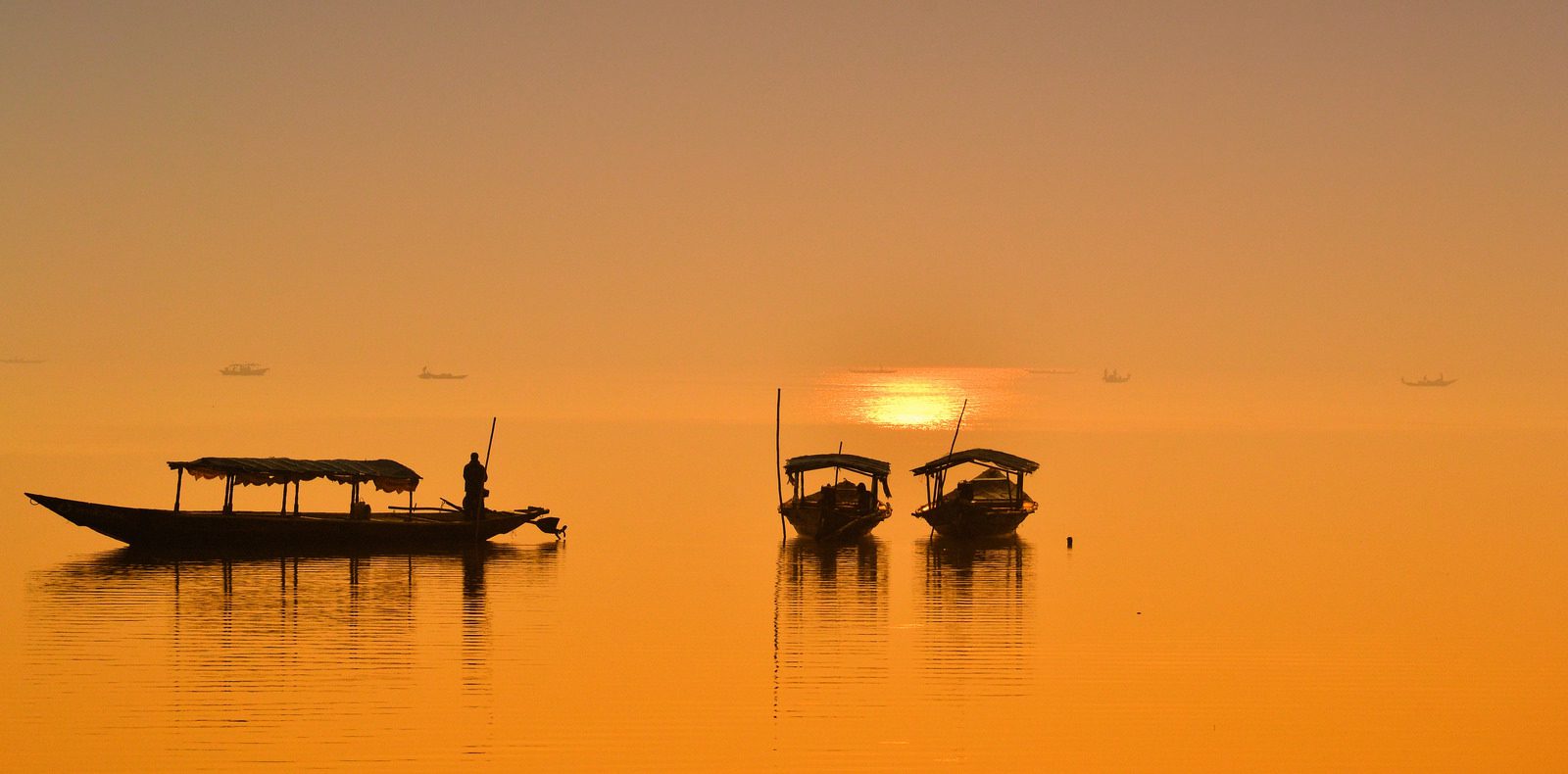
Image Source: Pallab Seth (Flickr)
Asia’s largest salt-water lagoon, spread over 1100 square kilometres in the state of Orissa, is a popular tourist attraction for nature lovers. Chilka Lake attracts a variety of migratory and aquatic birds to its shores due to its unique ecosystem of sandy ridges and brackish waters. It’s the ideal spot for us to take in the allure of this tranquil lagoon, as well as an excellent spot for bird-watching. At the Satapada viewing point, you can even see bottlenose dolphins and the rare Irrawaddy dolphins. If you’re going to Chilika Lake, go in the winter because that’s when the migratory birds arrive!
12. Digha, West Bengal
Source: Wikimedia Commons
Digha, a beach town on the Bay of Bengal’s shores, is one of the popular tourist places to visit in East India known for its untouched beaches and scenic views. Digha is a one-stop destination for families looking for a fun weekend activity. One of the best aspects of this hamlet is the wide range of tourist attractions. This most popular sea resort in West Bengal has a lot to offer people of all ages, with magnificent beaches, religious temples, and high-tech research centres and museums. Digha’s scenery can also provide you with the pleasure of seeing areas with little human impact and that are relatively untouched.
13. Simlipal National Park, Odisha
Source: Wikimedia Commons
Simlipal is in the northern part of Orissa’s Mayurbhanj district and is known for its national park and Tiger Reserve. Simlipal gets its name from the Bengal Simul Tree, which is adorned with beautiful flora and fauna.
Simlipal National Park is a bio-diversity haven for nature, not only in terms of wildlife but also in terms of faunal diversity. This area is nothing less than a gift from nature, with plateaus, meadows, gushing rivers, waterfalls, and dense forests, making it a traveller’s paradise. The Simlipal National Park is home to not only the world’s largest tiger population, but also elephants, leopards, Sambar, barking deer, hill mynah, and over 300 bird species and sixty reptile species.
14. Kalimpong, West Bengal
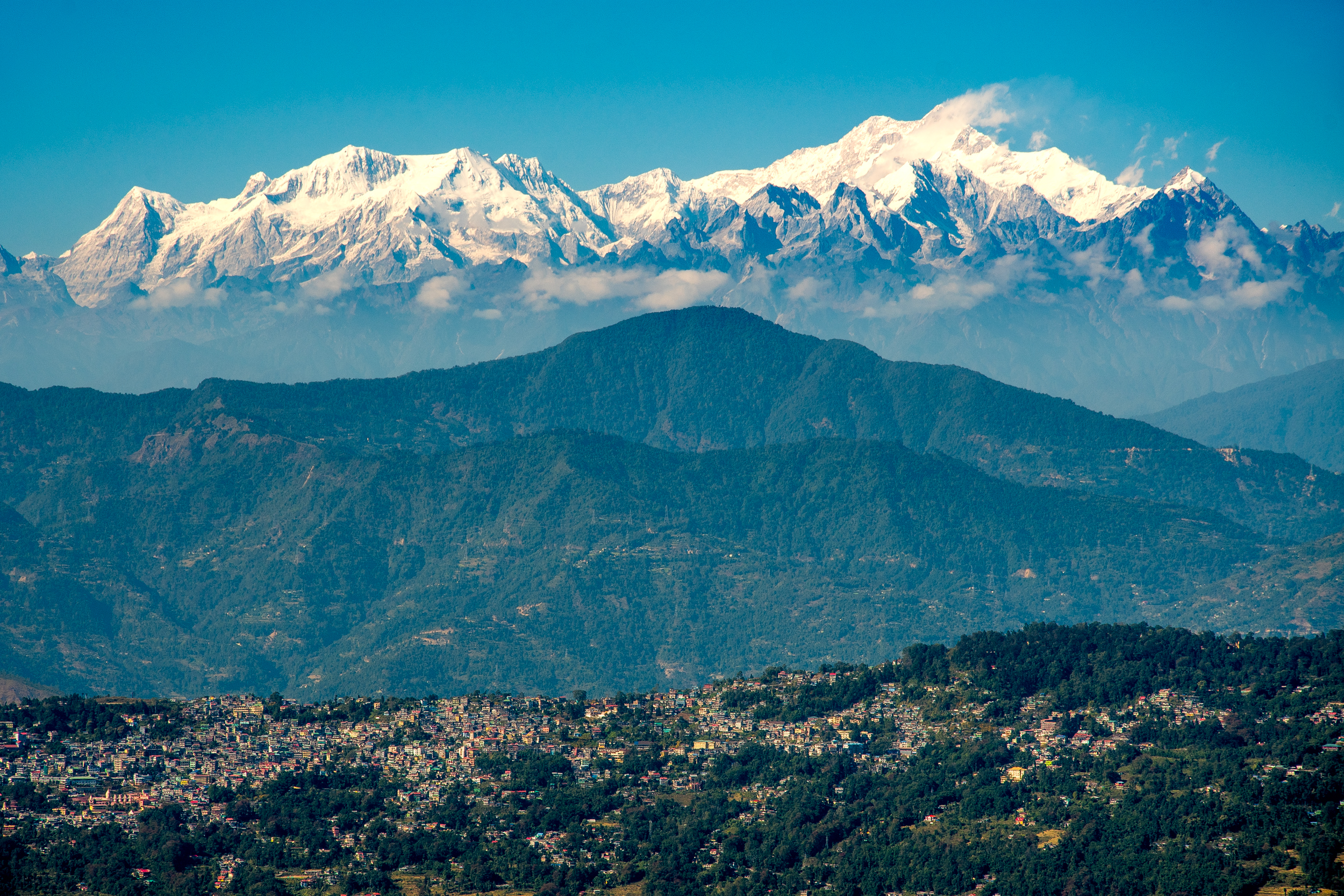 Source: Pixahive
Source: Pixahive
The quiet atmosphere of Kalimpong is the first thing that strikes a visitor. The presence of monasteries and churches throughout the town contributes to the peaceful atmosphere. The bustling bazaars and traditional handicrafts of Kalimpong are also well-known. Orchids and nurseries are well-known. The great Himalayan ranges that lie beyond Kalimpong provide a panoramic view.
15. Deoghar, Jharkhand
Source: Wikimedia Commons
Deoghar is one of the holy places to visit in East India, located alongside the Mayurakshi River in Jharkhand. The historic Baba Baidyanath Temple complex is a popular Hindu pilgrimage destination. Shiv Ganga is a sacred pool near the temple where Shiva devotees bathe. In the ornate, stone-carved Naulakha Mandir temple, there is a shrine to Krishna. Harila Jori, northeast of town, is home to a whitewashed Shiva temple and a sacred water tank.
16. Giridih, Jharkhand
Source: Wikimedia Commons
The word “Giridih” means “land of hills and hillocks,” and it refers to the region’s upland area. A large area of forest covers the majority of the district. Apart from bamboo, Semal, Mahua, and Palash, the Sal tree is the most common tree found here. Mica is one of the minerals found in abundance in Giridih.
The most important tourist attraction in Giridih is the Parasnath Hills, also known as Sri Sammeta Shikharji. It serves as a Jain pilgrimage site. Here, 20-24 Jain Tirthankaras found salvation. This is where Jharkhand’s highest granite mountain peak can be found.
17. Nalanda
Source: Wikimedia Commons
Take a step back in time and visit the ruins of the Nalanda Mahavihara, the longest-running Buddhist monastery in the country’s history. The ancient grounds date back to the 5th century, and now house an archaeological museum and memorial hall for tourists to learn about its historical significance, as well as to admire some of the works created during the monastery’s heyday.
18. Chandipur, Odisha
 Source: Wikimedia Commons
Source: Wikimedia Commons
Chandipur is a secluded seaside village in the Baleshwar district of Orissa, nestled safely along the coast. Chandipur is also known as Chandipur-on-Sea by the locals. Chandipur Beach is one of the places to visit in East India if natural wonders fascinate you.
The ebb tides, which recede around 1 to 4 km during low tides and disappear in a rhythmic pattern, are a unique feature of this beach. This provides a spectacular view of the rising sun as well as the sun drowning somewhere beyond the waters, giving the eyes a feast. You can even take a jeep ride to the sea when the water disappears.
You should be aware that there is no single best month for places to visit in East India. Summer, on the other hand, appears to be an ideal time due to the cool weather and the tranquilly of this part of the country. You’ll also be pleased to learn that the best time to visit the above-mentioned locations is from November to May.


